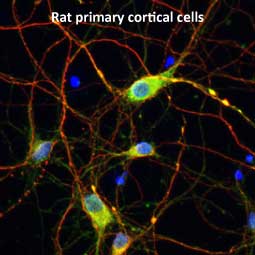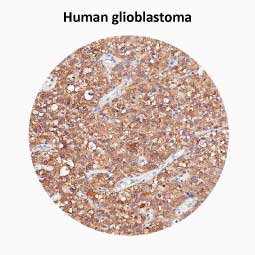Targeting Neuron-Tumor Networks in Glioblastoma
 |
Glioblastomas (GB) are aggressive adult brain malignancies characterized by diffuse invasion, cellular heterogeneity, and generally insurmountable therapeutic resistance. As a result, researchers and clinical oncologists are examining novel approaches to attack these tumors. One area of great interest focuses on interactions between GB cells and brain neural networks that promote GB progression. However, new technologies are needed to further define this GB neuronal connectome.
In an intriguing study in Cell, Tetzlaff et al. leveraged rabies virus-based retrograde tracing to map functional neuron-tumor networks in patient-derived GB models, unveiling how GB co-opts brain circuits to support tumor growth (1). The authors found early GB integration into brain-wide neuronal circuits, with both cholinergic and glutamatergic neurons driving tumor invasion and proliferation. Interestingly, while radiotherapy increased neuron-tumor connectivity by enhancing neuronal excitability, combining it with the AMPA receptor inhibitor perampanel significantly suppressed tumor progression. Moreover, selective ablation of tumor-connected neurons via a genetic rabies system robustly suppressed glioma growth. This study reveals the GB neuronal connectome as a key driver of malignancy and resistance, and identifies neuron-tumor disconnection as an encouraging therapeutic strategy.
GeneTex provides extensive listings of antibodies for neuroscience and cell biology research, including the P2X7 antibody (GTX104288) cited in this study. For more information, please check out our neuroscience product flyers and visit the GeneTex website.
|
Featured Products |
|
|
|
|
||||||||||||||||
Reference:
1. Cell. 2025 Jan 23;188(2):390-411.e36. doi: 10.1016/j.cell.2024.11.002. Epub 2024 Dec 6.



